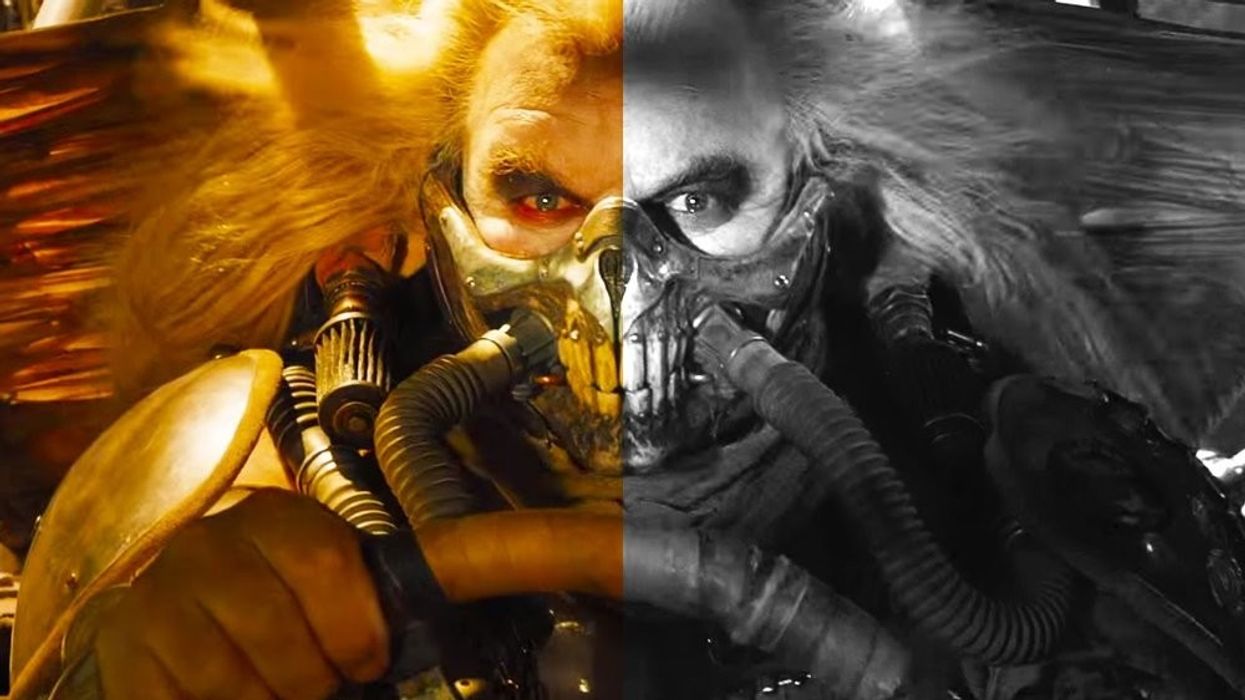Watch: 'Logan,' 'Fury Road,' and the Black & White Blockbluster
This video essay from Fandor ponders the cultural and cinematic significance of the recent release of black and white cuts of Mad Max: Fury Road and Logan.

Recently, two of the biggest films in recent memory, both members of highly successful franchises, received the black and white treatment. Mad Max: Fury Road, and Logan, the last installment in the X-Men franchise (as well as the grittiest, darkest entry in the series) were released in black and white cuts, with Logan even getting a modest theatrical release (the versions are known, respectively, as the "Black and Chrome" and "Noir" cuts). This essay from Leigh Singer of Fandor looks at the phenomenon of these two black and white versions of 21st century blockbusters and what they mean in a world where "the official marginalizing of mainstream monochrome could be dated from the final separate Academy Awards section for Black and White Cinematography, in 1967."
Logan director James Mangold was inspired to undertake his Noir cut partly by photographs he took on set. He explained, “The western and noir vibes of the film seemed to shine in the form and there was not a trace of modern comic hero movie sheen.” The film does have many parallels to classic western Shane and is certainly one of the darkest superhero movies in the genre's mainstream cinematic iteration. Indeed, the director called the black and white version "a chance to connect with movies of the past."
Fury Road director George Miller said of his own black and white cut that monochrome tends to make images "somehow more iconic," explaining how some elements in particular "play a lot better," though he did admit that since the movie was composed for color, there was "some information...that's missing" when it was reduced to two shades. However, he does consider the black and white version of the movie to be the best.
As Singer points out, though, "Mainstream monochrome films seem to need some specific narrative reasons, or a mostly black and white source material to justify such visual extravagance," using the examples of Sin City: A Dame to Kill For as an example of the latter, and Pleasantville of the former. It's a testament to the out-and-out success of Fury Road and Logan that they were able to make something so improbable a reality, and it's a testament to the world we live in that this reality was improbable in the first place.
"That to me is what makes black and white so very cool. It gives you a view of the world that really doesn't exist in reality." -Frank Darabont
In 2007, Frank Darabont put out a monochrome version of his adaptation of Stephen King's The Mist. The director had originally wanted to release that version theatrically, though the studio wasn't too keen on the idea, and Darabont himself observed, philosophically:
Youngsters especially don't want to see anything in black and white. They think it's old fashioned, out of date, or doesn't look real. That to me is what makes black and white so very cool. It gives you a view of the world that really doesn't exist in reality.
Luckily, in the age of the feature-heavy DVD release, he was able to get his vision out.
Singer acknowledges that being able to produce a high budget black and white feature today is a huge challenge, stating, "In the modern world, it's impossible to make a $100 million dollar black and white film. It's a risk most filmmakers won't take." A risk they can't afford to take, really. Only Stephen King and Frank Darabont, or the powers behind X-Men, or Mad Max, could make something like this happen, and it's a good thing that they did. A lot of people are reticent of black and white films, which might have something to do with an overarching obsession with realism in cinema, even outlandish cinema.
But there's a pleasure in the utterly cinematic space that black and white makes, a place without a pretense of reality, and a beauty that can be captured when the cameras are focused on recording the contrast of light and shadow and nothing else. As Singer concludes, it's a good thing that Mad Max and Logan were able to "take the risk and be as audacious as they wanted" because of their success. In the end, what Hollywood needs more of is "creative, daring, multi-million dollar franchises."
Source: Fandor
















